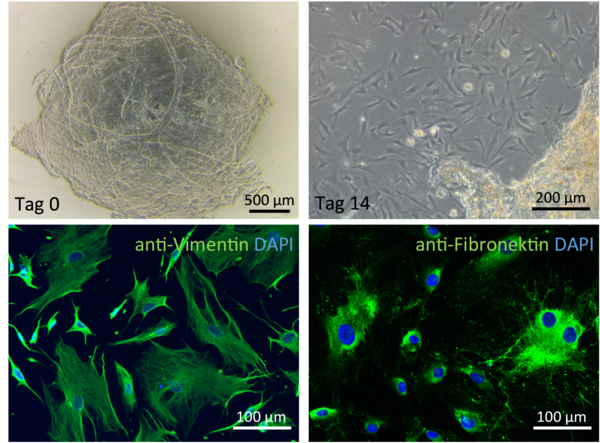AG Joost
Our interest
The central nervous system (CNS) is separated from its environment by several barriers: the blood-brain barrier, the blood-meningeal barrier, and the blood-cerebrospinal fluid (CSF) barrier. Despite these barriers, peripheral immune cells can infiltrate the CNS under pathological conditions such as multiple sclerosis or meningitis. Our group focuses on understanding the morphology and function of these CNS barriers, with a particular emphasis on the leptomeningeal compartment and its role in immune cell migration and activation.
The leptomeninges, consisting of the arachnoid mater, pia mater, and the CSF-filled subarachnoid space, encase the brain parenchyma. Recent research has highlighted the leptomeninges as an immunologically active compartment. However, the precise mechanisms and factors driving immune cell migration towards and activation within the meninges remain unclear. Additionally, the heterogeneous distribution of pathology-related changes in the leptomeninges (e.g., uneven distribution of immune cell accumulations in the meninges of multiple sclerosis patients) suggests structural and functional heterogeneity that has yet to be systematically explored.
We investigate the role of the most abundant cell type in the leptomeninges, the meningeal fibroblast, in meningeal inflammation using in vitro cultures of primary human leptomeningeal fibroblasts. To address meningeal heterogeneity, we analyze human tissue and murine models of neuroinflammation, studying morphology through histology, immunohistochemistry, and micro-CT scanning, and assessing gene expression using bulk RNA and single-nucleus NGS sequencing.
Cooperations
- Wolfien, Markus; Institute for Medical Informatics and Biometry (IMB), TU Dresden, Germany
- Baumann, Alexandra; Department of Systems Biology and Bioinformatics, University of Rostock, Germany
- Büttner, Andreas; Institute of Forensic Medicine, Rostock University Medical Center, Germany
- Freiman, Thomas; Department of Neurosurgery, Rostock University Medical Center, Germany
- Frank, Marcus; Medical Biology and Electron Microscopy Centre, Rostock University Medical Center, Germany
- Niestrawska, Justyna; Division of Macroscopic and Clinical Anatomy, Gottfried Schatz Research Center, Medical University of Graz, Austria
- Hasel, Philip; Centre for Discovery Brain Sciences, School of Biomedical Sciences, College of Medicine and Veterinary Medicine, The University of Edinburgh, Edinburgh, Scotland, UK
Most important publications
- Greiner T, Manzhula K, Baumann L, Kaddatz H, Runge J, Keiler J, Kipp M, Joost S. 2022. Morphology of the murine choroid plexus: Attachment regions and spatial relation to the subarachnoid space. Front. Neuroanat. 16. doi:10.3389/fnana.2022.1046017.
- Beecken M, Baumann L, Vankriekelsvenne E, Manzhula K, Greiner T, Heinig L, Schauerte S, Kipp M, Joost S 2023 The Cuprizone Mouse Model: A Comparative Study of Cuprizone Formulations from Different Manufacturers. Int J Mol Sci 24:10564. doi:10.3390/ijms241310564
- Feifei L, Richter A, Runge J, Keiler J, Hermann A, Kipp M, Joost S. 2022. Spontaneous Hind Limb Paralysis Due to Acute Precursor B Cell Leukemia in RAG1-deficient Mice. J Mol Neurosci. doi:10.1007/s12031-022-02025-7.
- Joost S, Schweiger F, Pfeiffer F, Ertl C, Keiler J, Frank M, Kipp M. 2022. Cuprizone Intoxication Results in Myelin Vacuole Formation. Front Cell Neurosci 16:709596. doi:10.3389/fncel.2022.709596.


